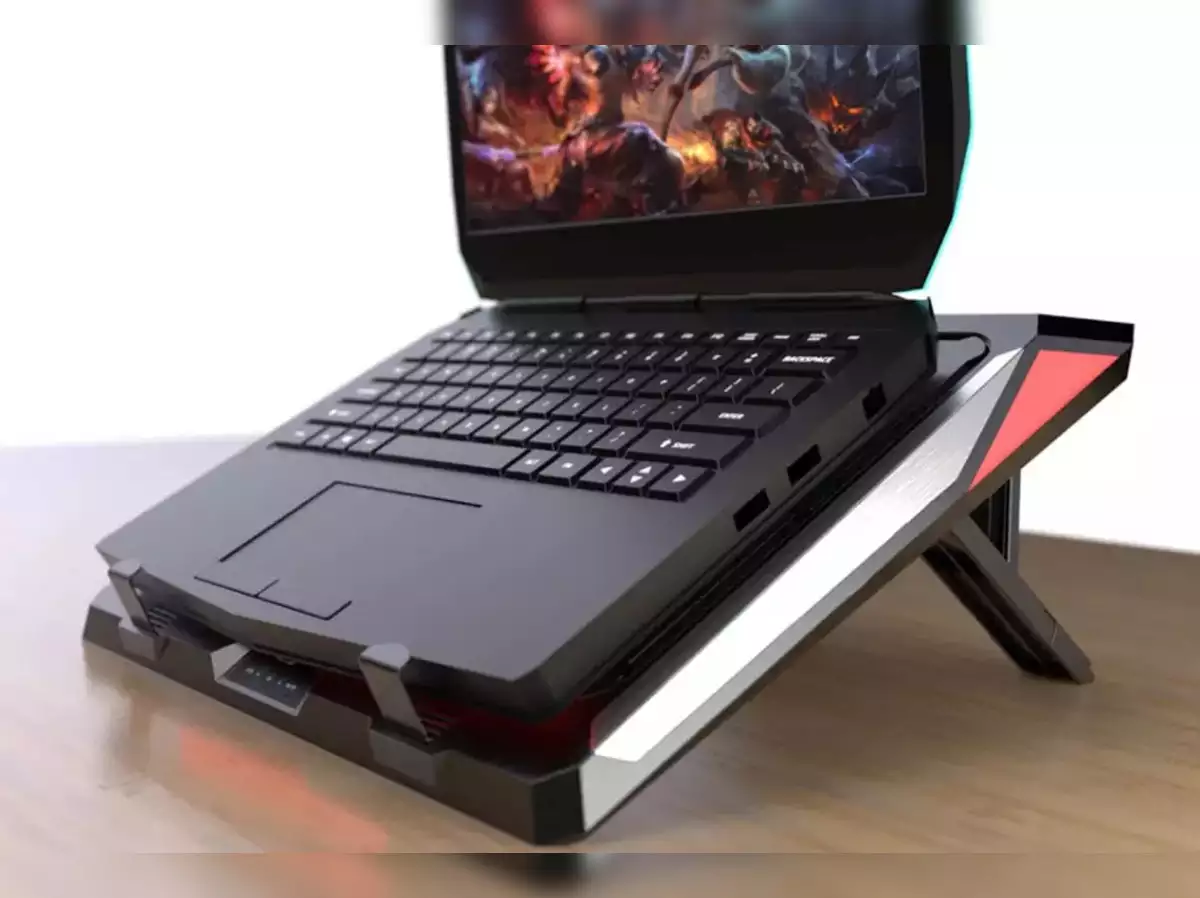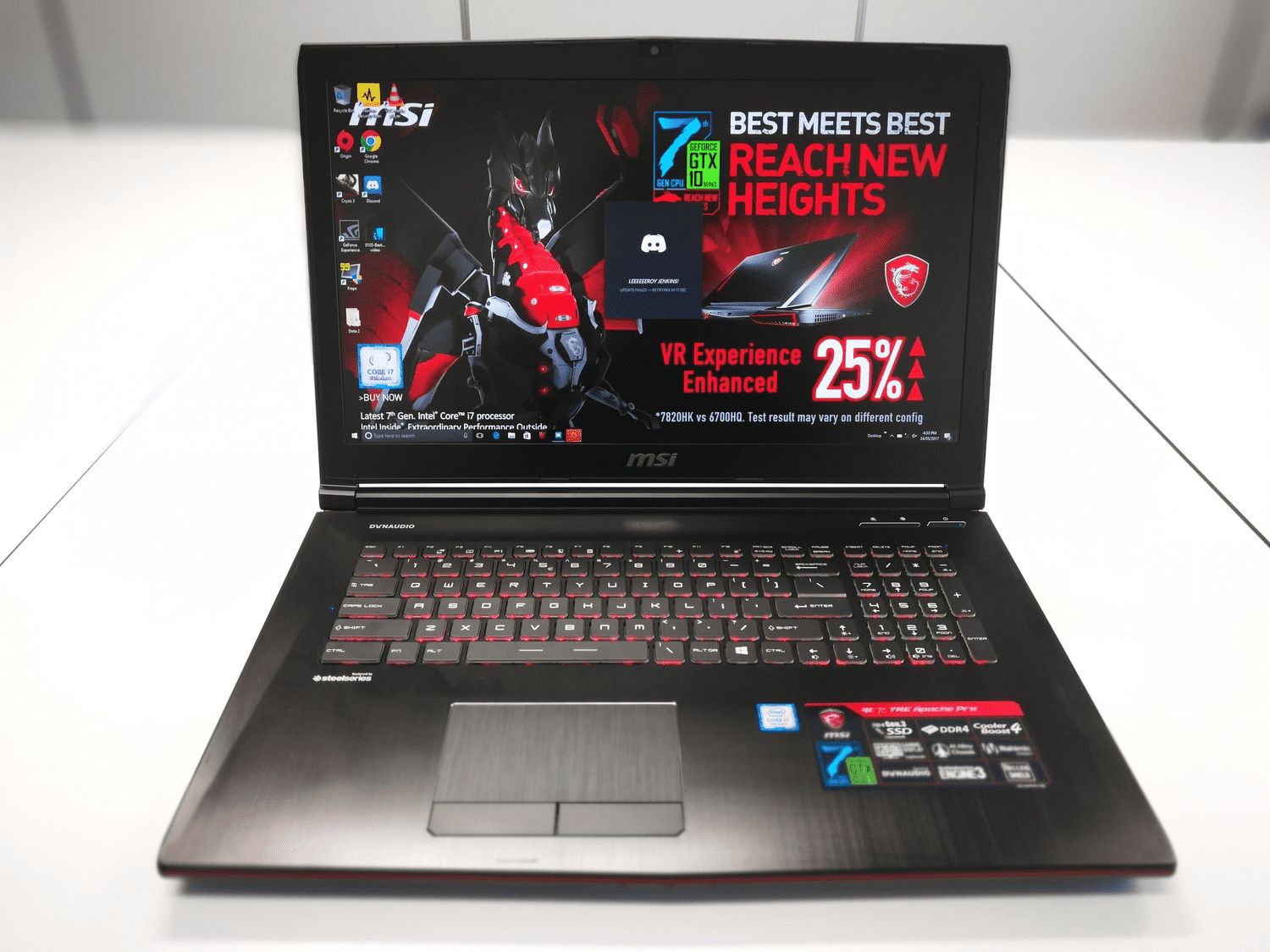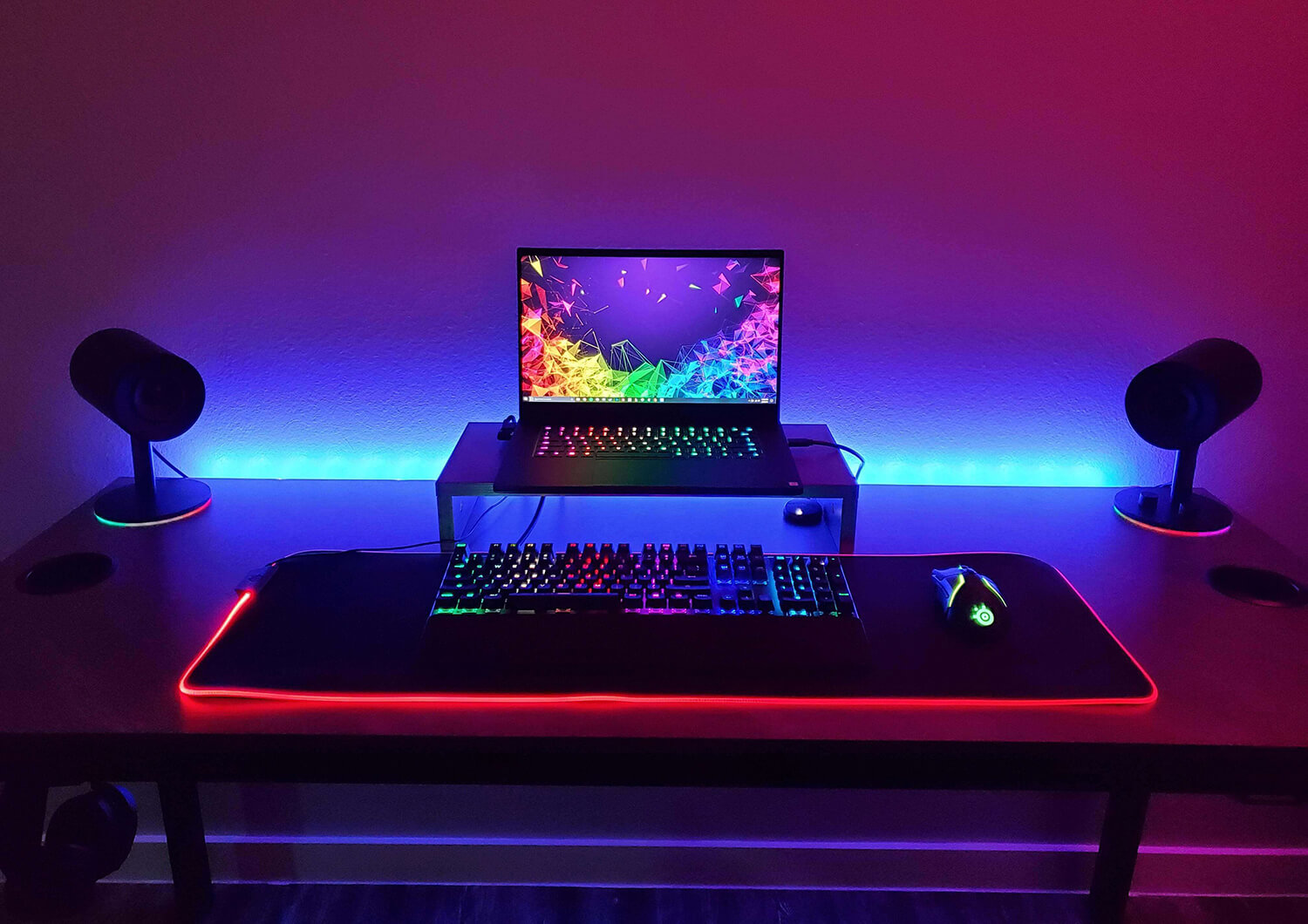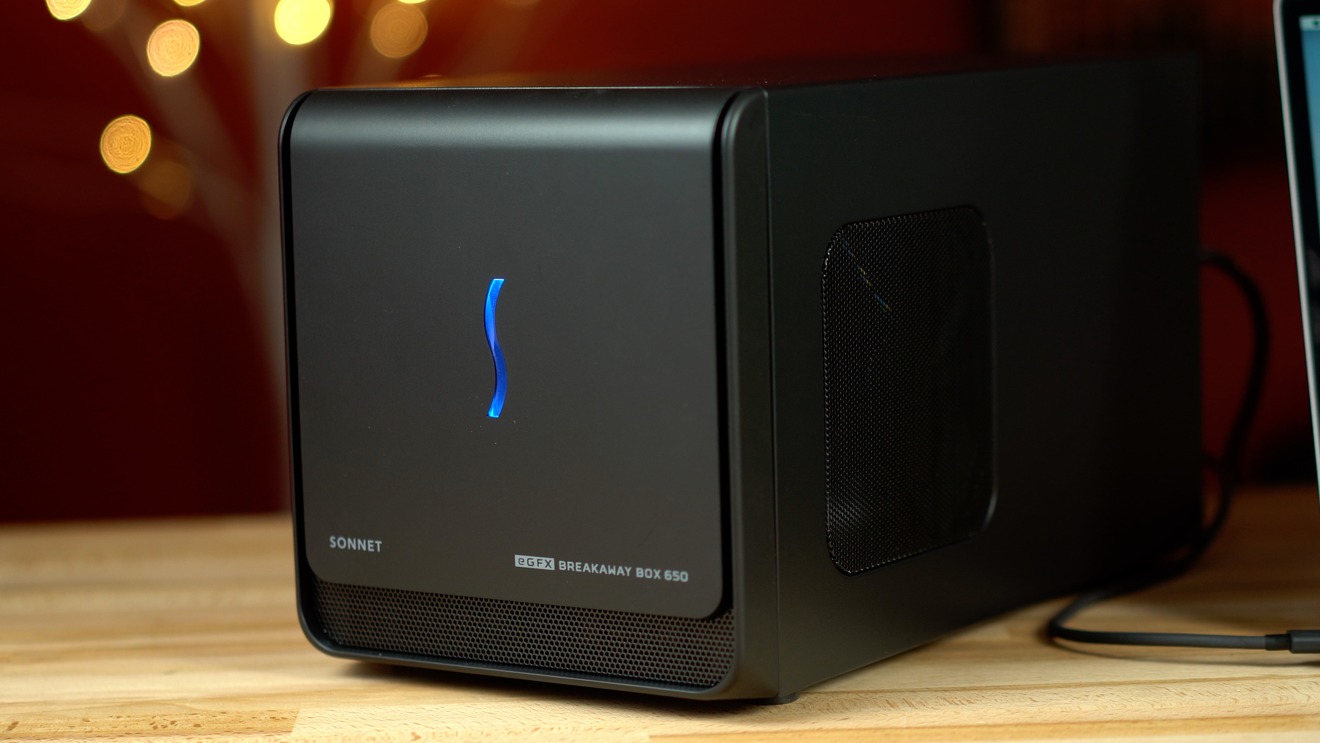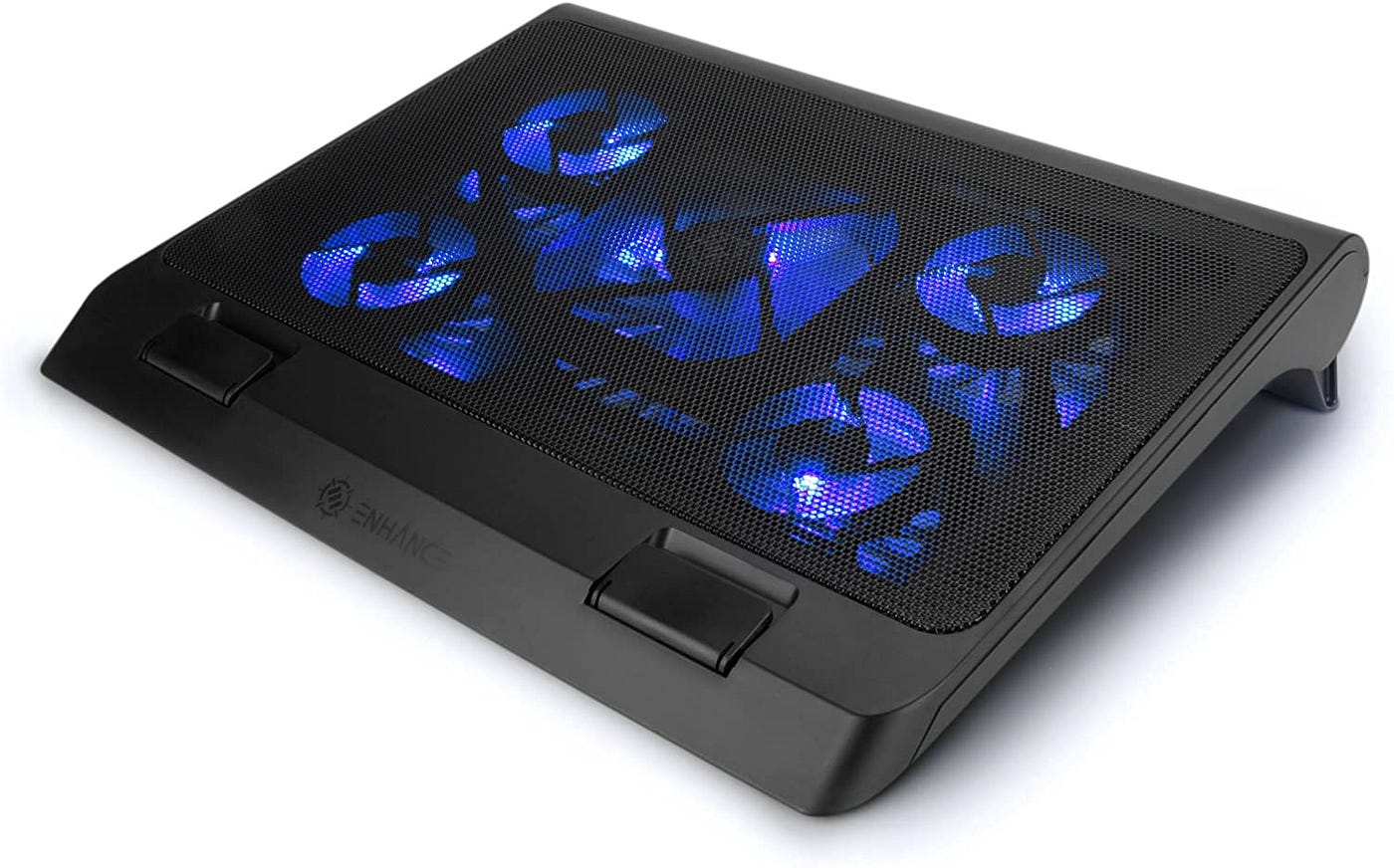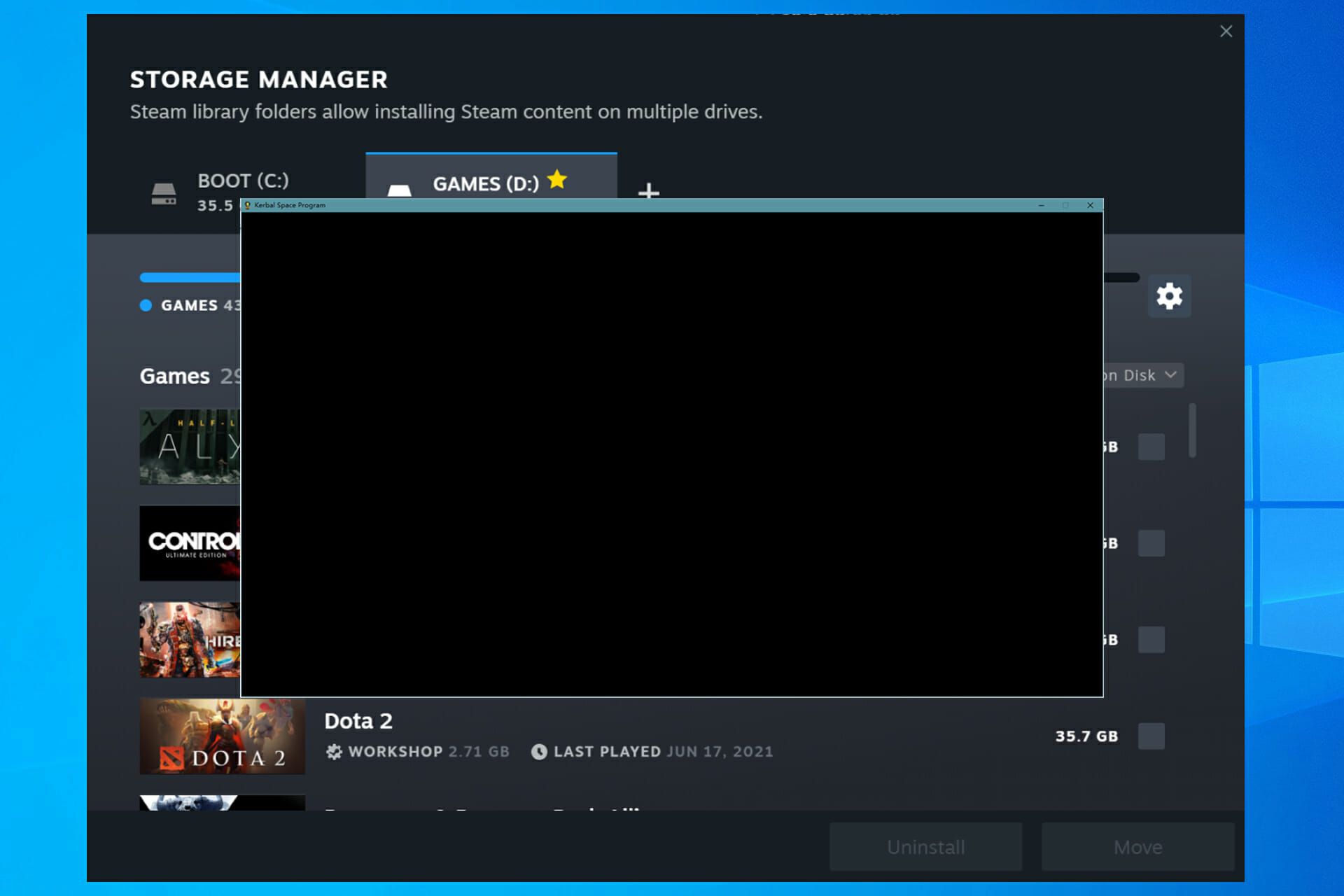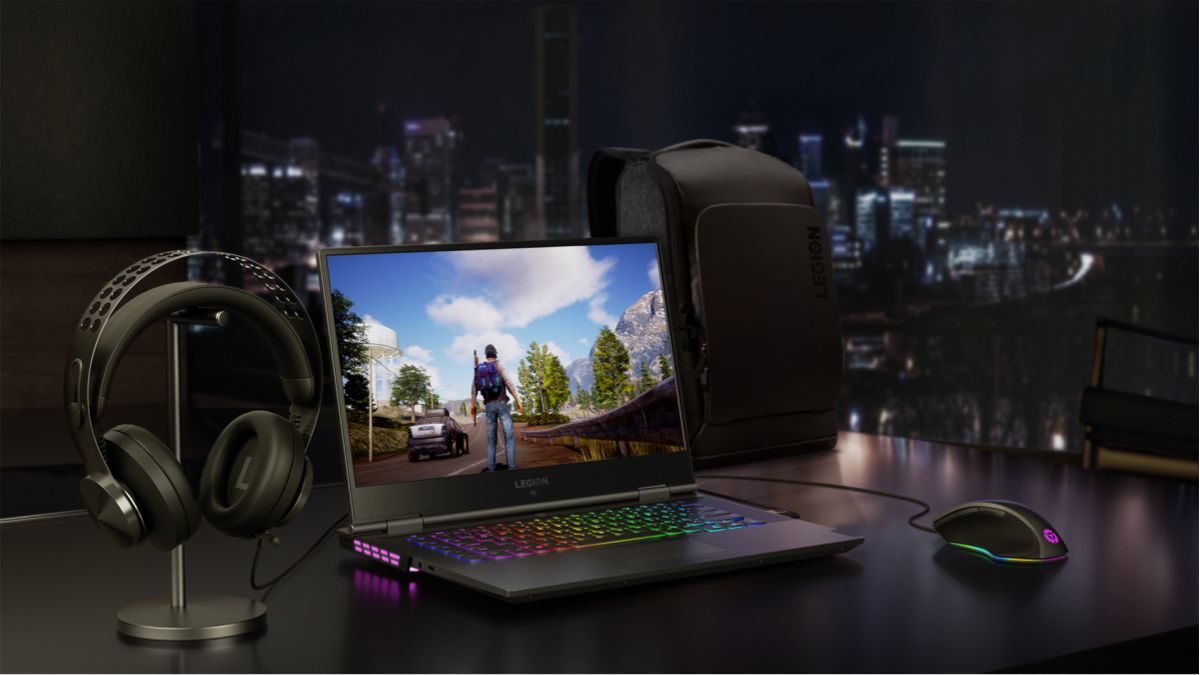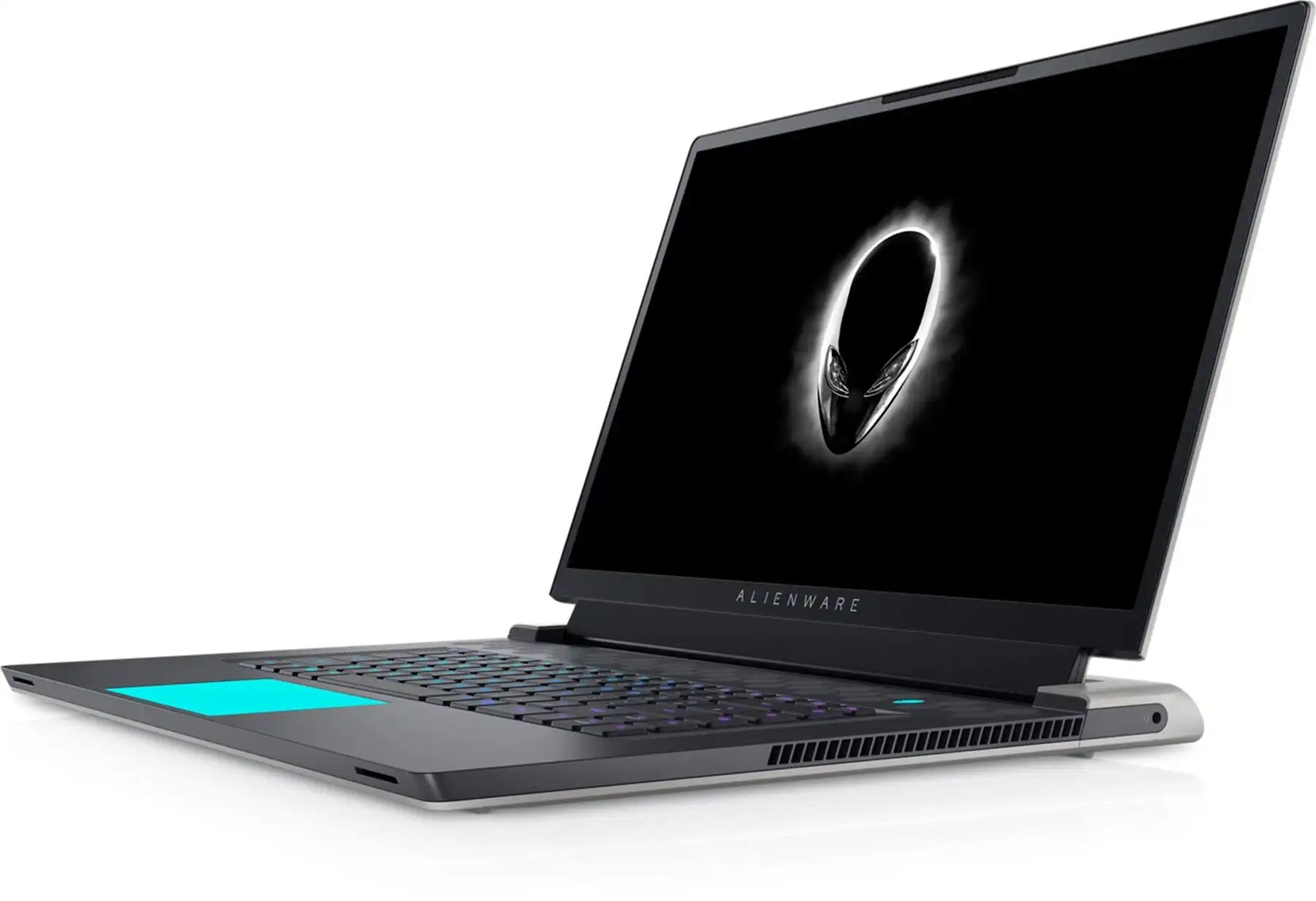Introduction
Welcome to the world of gaming laptops, where power and performance are at the forefront. As a gamer, you know that getting the best out of your gaming experience requires a high-performance laptop that can handle your favorite games with ease. However, with great power comes the challenge of keeping your laptop cool.
Laptop temperatures can soar while running graphics-intensive games, causing performance throttling and even hardware damage if left uncontrolled. It’s important to find the right balance between performance and temperature to ensure smooth gameplay and extend the lifespan of your gaming laptop.
In this article, we will delve into the factors that affect laptop temperature, discuss the ideal temperature range for gaming laptops, explore thermal management techniques, and provide tips on how to keep your laptop cool while gaming. Whether you’re a casual gamer or a hardcore enthusiast, understanding the dynamics of laptop temperature will empower you to make informed decisions and optimize your gaming experience.
So, let’s dive in and discover the secrets to maintaining the perfect temperature for your gaming laptop!
Factors that Affect Laptop Temperature
Several factors can influence the temperature of your gaming laptop during intense gameplay sessions. Understanding these factors can help you identify potential issues and implement effective cooling strategies. Let’s take a closer look at some of the key factors:
- Hardware Components: The components inside your gaming laptop, such as the CPU (Central Processing Unit) and GPU (Graphics Processing Unit), generate heat when under heavy load. The more powerful your hardware, the more heat it will produce. Overclocking these components can also significantly increase their temperature.
- Ventilation and Airflow: The design and quality of the laptop’s cooling system play a crucial role in maintaining optimal temperature. Laptops with efficient cooling mechanisms, including multiple fans, heat sinks, and vents, tend to have better heat dissipation and airflow. Dust accumulation can also obstruct airflow and lead to higher temperatures.
- Ambient Room Temperature: The ambient temperature of the room where you use your gaming laptop can affect its overall temperature. If the room temperature is already high, it will make it harder for the laptop’s cooling system to bring down the temperature effectively.
- Usage Intensity: The intensity of your gaming sessions directly impacts the temperature of your laptop. High-end games that push your hardware to its limits will generate more heat compared to less demanding games. Running multiple applications simultaneously or performing resource-intensive tasks like video rendering will also increase the laptop’s temperature.
- Surface for Placement: The surface on which you place your laptop can affect its temperature. Using a laptop cooling pad or elevating the laptop to allow better airflow underneath can help dissipate heat effectively.
By paying attention to these factors, you can gain valuable insights into the potential causes of overheating in your gaming laptop and take proactive steps to manage and control its temperature.
Ideal Temperature for Gaming Laptops
The ideal temperature range for gaming laptops is crucial for optimal performance and longevity. Operating your laptop within the recommended temperature limits ensures that the internal components stay within safe thresholds and prevents overheating-related issues.
While specific temperature targets may vary depending on the laptop model and manufacturer, a general guideline is to keep the CPU and GPU temperatures below 85 degrees Celsius (185 degrees Fahrenheit) during gaming sessions. Exceeding these temperatures for prolonged periods can lead to thermal throttling, where the laptop reduces performance to prevent damage.
On the other hand, it’s important to note that excessively low temperatures can also negatively impact performance. If the temperature drops too low, the laptop may struggle to achieve its maximum performance potential. Generally, a temperature range of 35 to 50 degrees Celsius (95 to 122 degrees Fahrenheit) during idle or light usage is considered acceptable.
It’s worth mentioning that different laptops and hardware configurations may have varying temperature tolerances. Therefore, it’s essential to refer to your laptop’s documentation or the manufacturer’s website for specific temperature recommendations.
Monitoring the temperature of your gaming laptop is crucial to ensure it stays within the ideal range. Many laptop manufacturers provide software utilities that allow you to track CPU and GPU temperatures in real-time. Third-party applications such as HWMonitor and MSI Afterburner are also popular choices for monitoring temperature and other vital system stats.
By regularly monitoring the temperature, you can make informed decisions and take necessary actions to prevent overheating issues. If you notice consistently high temperatures, consider implementing effective cooling strategies to keep your gaming laptop running at its best.
Now that we understand the ideal temperature range for gaming laptops, let’s explore some thermal management techniques that can help you achieve and maintain these temperatures.
Thermal Management Techniques for Gaming Laptops
To ensure optimal temperature control and prevent overheating in your gaming laptop, implementing effective thermal management techniques is crucial. Here are some techniques that can help you keep your laptop cool during intense gaming sessions:
- Clean the Vents and Fans: Dust and debris can accumulate in the laptop’s vents and fans, obstructing airflow and leading to higher temperatures. Regularly clean these components using compressed air or a soft brush to remove any buildup.
- Use a Laptop Cooling Pad: A laptop cooling pad with built-in fans can provide additional cooling for your laptop. These pads help increase airflow and prevent heat buildup by elevating the laptop and creating a more efficient cooling system.
- Avoid Blocking Vents: Ensure that the vents on your laptop are not blocked by placing it on a flat surface and keeping obstructive objects away. Blocking the vents can hinder airflow and contribute to higher temperatures.
- Adjust Power Settings: Lowering the performance settings and limiting the maximum processor state can help reduce the heat generated by your laptop. You can adjust these settings in the Power Options menu in the Control Panel.
- Optimize In-Game Graphics Settings: Adjusting the graphics settings in your games can reduce the strain on your hardware, resulting in lower temperatures. Lowering the resolution, disabling anti-aliasing, and reducing the graphics quality can help achieve better thermal management.
- Apply Thermal Paste: Over time, the thermal paste between the CPU/GPU and the cooling system may degrade, leading to decreased heat transfer efficiency. Reapplying thermal paste can help improve heat dissipation and lower temperatures.
- Use External Cooling Solutions: External cooling solutions such as laptop cooling fans and cooling mats can provide additional cooling support. These solutions help dissipate heat more effectively, especially during prolonged gaming sessions.
- Manage Background Processes: Close unnecessary background processes and applications that consume CPU and GPU resources. This reduces the overall heat generated by your laptop and allows the cooling system to focus on managing the gaming workload.
Implementing these thermal management techniques can significantly help in controlling the temperature of your gaming laptop. However, it is essential to understand that every laptop is unique, and the effectiveness of these techniques may vary. Experiment with different methods to find the most effective combination for your specific laptop and gaming setup.
In the next section, we will explore how you can monitor and control the temperature of your gaming laptop in real-time.
Monitoring and Controlling Laptop Temperature
Monitoring and controlling the temperature of your gaming laptop is crucial to ensure optimal performance and prevent potential overheating issues. Fortunately, several tools and techniques are available to help you monitor and control the temperature effectively:
1. Temperature Monitoring Software: Many laptop manufacturers provide software utilities that allow you to monitor various system parameters, including CPU and GPU temperatures. These utilities often provide real-time temperature readings and alerts, allowing you to keep a close eye on the temperature levels.
2. Third-Party Monitoring Applications: In addition to manufacturer-provided software, you can also utilize third-party applications like HWMonitor, Core Temp, or Real Temp. These applications offer advanced monitoring features and compatibility with a wide range of laptop models.
3. Fan Control Software: Some gaming laptops allow you to manually control the speed of cooling fans through specialized software. By adjusting the fan speed, you can increase or decrease airflow to keep the temperature within the desired range.
4. Undervolting: Undervolting is a process of reducing the voltage supplied to the CPU, which can help in lowering the temperature without sacrificing performance. Undervolting can be done through BIOS settings or with the help of third-party software like Intel XTU or ThrottleStop.
5. Laptop Cooling Pads and External Fans: Using a laptop cooling pad or external fans can provide additional cooling support by enhancing airflow underneath the laptop. These external cooling solutions can help in maintaining lower temperatures during prolonged gaming sessions.
6. Manual Control of Graphics Settings: Adjusting the graphics settings in games can have a significant impact on the temperature generated by your gaming laptop. Lowering the graphics quality, reducing anti-aliasing, or limiting the frame rate can alleviate the strain on the GPU and lower temperature levels.
7. Regular Maintenance: Routine maintenance, such as cleaning the vents and fans, is essential to ensure optimal airflow and heat dissipation. Removing dust and debris from the cooling system prevents clogging and helps maintain lower temperatures.
By utilizing these monitoring and control techniques, you can effectively manage and optimize the temperature of your gaming laptop. Regularly monitoring the temperature levels and taking appropriate actions will ensure that your laptop runs smoothly and maintains a safe operating temperature.
Now, let’s move on to some practical tips on how to keep your gaming laptop cool while gaming.
Tips to Keep Your Laptop Cool While Gaming
Gaming laptops are notorious for their heat generation during intensive gaming sessions. To keep your laptop cool and maintain optimal performance, consider implementing the following tips:
- Ensure Proper Ventilation: Make sure your laptop has enough space around it for proper airflow. Avoid using the laptop on soft surfaces like beds or couches that can block the vents. Instead, use a hard, flat surface like a desk or a laptop cooling pad to allow for better airflow.
- Use Cooling Pads or Fans: Invest in a laptop cooling pad with built-in fans or external cooling fans. These devices help improve air circulation and dissipate heat more effectively, reducing the overall temperature of your laptop.
- Optimize Graphics and Performance Settings: Adjust the in-game graphics settings to lower the strain on your laptop’s GPU. Lowering the resolution, disabling unnecessary effects, or lowering the frame rate can help reduce heat generation without a significant impact on the gaming experience.
- Close Unnecessary Background Processes: Close any unnecessary programs or applications running in the background. These processes consume system resources and generate additional heat, putting more strain on your laptop’s cooling system.
- Keep Your Laptop Clean: Regularly clean the vents and fans of your laptop to remove dust and debris. Accumulated dust can obstruct airflow, leading to higher temperatures. Use compressed air or a soft brush to gently clean the vents and fans.
- Use Undervolting: Undervolting your CPU can help reduce heat generation without affecting performance. You can undervolt your CPU using software such as Intel XTU or ThrottleStop, but proceed with caution and do thorough research before applying any undervolting settings.
- Monitor and Control Temperature: Utilize temperature monitoring software to keep track of your laptop’s temperature in real-time. If you notice temperatures rising too high, take necessary action, such as reducing the workload or adjusting cooling settings, to bring the temperature down.
- Avoid Overclocking: While overclocking may enhance performance, it also increases heat generation. Unless you have efficient cooling solutions in place, avoid overclocking your laptop’s CPU or GPU to prevent excessive temperature spikes.
- Consider Repasting the CPU and GPU: Over time, the thermal paste between the CPU/GPU and the cooling system can degrade, reducing its effectiveness. Applying fresh thermal paste can help improve heat transfer and lower temperatures. However, this requires proper knowledge and expertise, so consult professional help or follow detailed guides if you decide to proceed with repasting.
By implementing these tips, you can effectively manage and control the temperature of your gaming laptop while enjoying an uninterrupted gaming experience. Remember, maintaining a cool and optimal temperature not only enhances performance but also prolongs the lifespan of your laptop.
Now that you have an arsenal of cooling techniques at your disposal, go ahead and unleash the full potential of your gaming laptop without worrying about overheating.
Conclusion
Gaming laptops are powerful machines that can provide an immersive gaming experience, but they also come with the challenge of managing temperature and preventing overheating. By understanding the factors that affect laptop temperature, knowing the ideal temperature range for gaming laptops, implementing thermal management techniques, and following tips to keep your laptop cool while gaming, you can optimize performance and safeguard the longevity of your gaming laptop.
Factors such as hardware components, ventilation, ambient room temperature, usage intensity, and surface placement all contribute to the overall temperature of your gaming laptop. It is important to be mindful of these factors and take necessary steps to maintain optimal temperatures.
Keeping your gaming laptop within the ideal temperature range ensures that your components are not subjected to excessive heat that can lead to performance issues or hardware damage. Regularly monitoring the temperature with software utilities, using cooling pads or fans, optimizing graphics and performance settings, and keeping your laptop clean are effective strategies for temperature control.
Additional techniques such as undervolting, closing background processes, and considering repasting the CPU and GPU can further enhance the cooling capacity of your laptop. It’s important to note that the effectiveness of these techniques may vary depending on your specific laptop model and hardware configuration.
By implementing these strategies and maintaining a cool temperature while gaming, you can enjoy smoother gameplay, reduced risk of thermal throttling, and an extended lifespan for your gaming laptop.
So, take the time to understand the unique dynamics of your gaming laptop, experiment with different cooling techniques, and find the best combination that works for you. With the right balance between performance and temperature, you can unlock the true potential of your gaming laptop and immerse yourself in the thrilling world of gaming.







